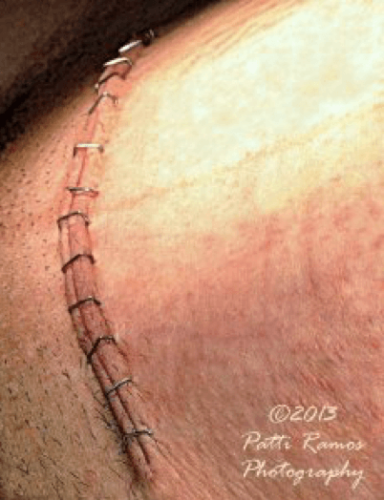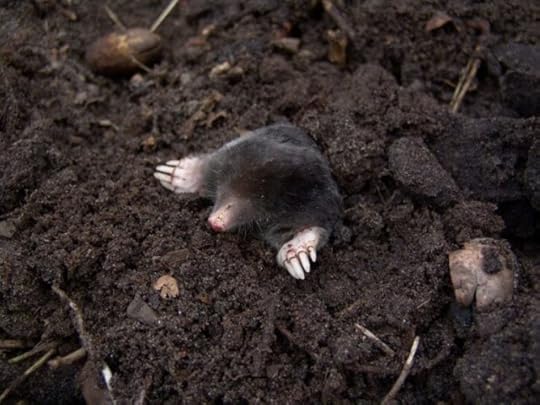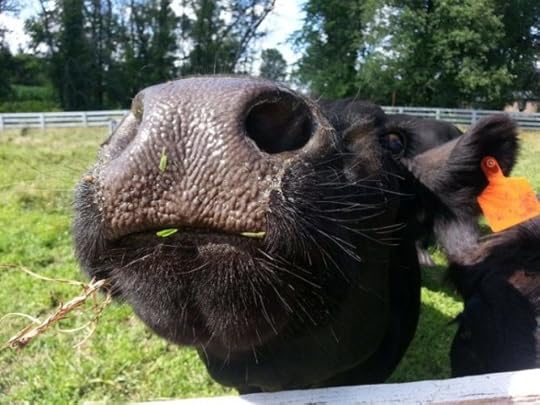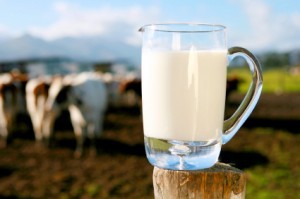Mark Sloan's Blog, page 2
June 13, 2020
Home Birth vs Hospital Birth – A Pictoral Display
No words are necessary to describe the difference between hospital birth and home birth. The pictures below speak for themselves. First, I will show you the beauty, then I will show you the beast.
Which would YOU choose?
Which do you think your baby would prefer?
Please note: I do not know the source of some of the pictures below. Where the source is known, I have credited that person or photographer. If any of my readers know the source for an unmarked picture below, please let me know and I will gladly credit the source next to the picture. And/or I can remove the pictures if anyone is uncomfortable with me posting them here.
Home Birth
Photo Credits Tanya Walker Midwife
http://www.natureswaymidwife.com/









Photo Credit Angie Garapata DeGaytan
https://www.facebook.com/abrazaelmilagro





Photo Credit Lamae Saunders









Photo Credit Midwife Carol Gautschi

Photo Credit Gregarius Peach

Photo Sources Unknown














Hospital Birth
Photo Credit for the following photos: Doula Patti Ramos
http://www.pattiramos.com/
Cesarean Butchery

The Hijacked Birth

Merciless PULLING on the head and neck
Forceful removal from the womb, stealing the baby’s birth victory

More merciless pulling on the neck

Staples in the Body? Seriously???? Are These the Same People That Created Frankenstein?
What the Hell Is Wrong With These People?
Ouch!!!

What would a good medical ritual be without needles and drugs? Did you know that epidural anesthesia contains fentanyl and babies born on drugs like fentanyl have an increased risk of becoming addicted to opioids later in life?

Oral and Nasal Rape Baby does NOT like this at all as you can clearly see from baby’s body posture i.e., tense feet, screaming, trying to push the abusers away

Separation of Mother and Baby Immobilizing Both Mother and Child No Eye Contact, No Skin-to-Skin, No Touching Mom is Drugged and Sad Bonding is Blocked and Deep Grief is Likely to Ensue

More Mother Grief Immobilized Mom and Babe Gunk in Baby’s Eyes Prevents Eye Contact and Undermines Bonding Baby Does NOT Trust Hospital Personnel

Cutting the Cord and Stealing Baby’s Blood is Cruel! These Vampires Sell Baby’s Umbilical Blood to the Highest Bidder Baby’s Oxygen Supply is Cut Off Baby Has Just Lost 1/3 of His/Her Blood Supply. This is Abuse!

Photo Source for the following photos is unknown:
Hey Doc! I’m NOT Made of Elastic!
What the Hell Are You Doing?
Could you Possibly Be any More Forceful?

You are kidding me right?

Violent Rupture of Water Membranes Destroys the Padding that Protects the Baby from the Intensity of Contractions Causes Baby to Experience Pain During Birth

Please get me to a chiropractor immediately.
These brutish people have just mangled my spinal cord.

Alienating, Isolating, and Disempowering Fathers Doctors have Usurped the Father’s Role During Birth This Does Not Bode Well for a Healthy Marriage

The Satanic Ritual of Cesarean Birth — As Drawn by a Victim

PLEASE DON’T CUT MY CORD!!!!
HELP! I WANT TO GET AWAY FROM YOU!

Oh Mommy!!! Why did they do this to you?

Separating Mother and Baby at Birth.
A surefire way to undermine bonding, interfere with breastfeeding, cause postpartum depression, and break down the family. The eye ointment prevents bonding too by blocking eye contact.

Circumcision – The ritual sexual torture and genital mutilation of infants
Done 96% of the time in the US with no anesthetic. In this case they combine the torture of swaddling with genital torture. This causes maximum pain, terror, brain damage, and ultimately dissociation. Bonding between this baby and his parents will be forever undermined. He now knows they will not protect him from harm.

Article by Jeanice Barcelo
Source
.fb_iframe_widget_fluid_desktop iframe {
width: 100% !important;
}
The post Home Birth vs Hospital Birth – A Pictoral Display appeared first on EndAllDisease.
May 30, 2020
75 Mind-Blowing Terence McKenna Quotes
Terence McKenna (November 16, 1946 – April 3, 2000) was an American philosopher, ethnobotanist, psychonaut, lecturer, writer and author who spend much of his life speaking and writing about a variety of important subjects, including but not limited to, shamanism, psychedelic drugs, plant-based entheogens, alchemy, metaphysics, language, culture, environmentalism, technology and the nature of human consciousness.
Without further ado, here is a collection of some of the very best philosophical quotes from the psychedelic mind of the mushroom ambassador Terence McKenna, hand-picked with love for your inspiration:
1. “I think of going to the grave without having a psychedelic experience like going to the grave without ever having sex. It means that you never figured out what it is all about. The mystery is in the body and the way the body works itself into nature.”
2. “If the words ‘life, liberty, and the pursuit of happiness’ don’t include the right to experiment with your own consciousness, then the Declaration of Independence isn’t worth the hemp it was written on.”
3. “If you don’t smoke cannabis, you may spend your evening balancing your checking account. If you do smoke cannabis you may spend your evening contemplating the causes of the Greek Renaissance.”
4. “Stop consuming images and start producing them.”
5. “You are a divine being. You matter, you count. You come from realms of unimaginable power and light, and you will return to those realms.”
6. “You are an explorer, and you represent our species, and the greatest good you can do is to bring back a new idea, because our world is endangered by the absence of good ideas. Our world is in crisis because of the absence of consciousness.”
7. “The male dominant agenda is so fragile that any competitor is felt as a deadly foe.”
8. “You simply have to turn your back on a culture that has gone sterile and dead and get with the program of a living world and the imagination.”
9. “The imagination is the goal of history. I see culture as an effort to literally realize our collective dreams.”
10. The message of psychedelics is that culture can be re-engineered as a set of emotional and spiritual values rather than products. This is terrifying news.”
11. “Nature loves courage. You make the commitment and nature will respond to that commitment by removing impossible obstacles. Dream the impossible dream and the world will not grind you under, it will lift you up. This is the trick. This is what all these teachers and philosophers who really counted, who really touched the alchemical gold, this is what they understood. This is the shamanic dance in the waterfall. This is how magic is done. By hurling yourself into the abyss and discovering its a feather bed.”
12. “Half the time you think your thinking you’re actually listening.”
13. “Psychedelics are illegal not because a loving government is concerned that you may jump out of a third story window. Psychedelics are illegal because they dissolve opinion structures and culturally laid down models of behaviour and information processing. They open you up to the possibility that everything you know is wrong.”
14. “The artist’s task is to save the soul of mankind; and anything less is a dithering while Rome burns. If artists cannot find the way, then the way cannot be found.”
15. “Animals are something invented by plants to move seeds around. An extremely yang solution to a peculiar problem which they faced.”
16. “The syntactical nature of reality, the real secret of magic, is that the world is made of words. And if you know the words that the world is made of, you can make of it whatever you wish.”
17. “The purpose of life is to familiarize oneself with this after-death body so that the act of dying will not create confusion in the psyche.”
18. “We tend to disempower ourselves. We tend to believe that we don’t matter. And in the act of taking that idea to ourselves we give everything away to somebody else, to something else.”
19. “The shaman is not merely a sick man, or a madman; he is a sick man who has healed himself.”
20. “You see, a secret is not something untold. It’s something which can’t be told.”
21. “If you don’t have a plan, you become part of somebody else’s plan.”
22. “Nature is not our enemy, to be raped and conquered. Nature is ourselves, to be cherished and explored.”
23. “We have been to the moon, we have charted the depths of the ocean and the heart of the atom, but we have a fear of looking inward to ourselves because we sense that is where all the contradictions flow together.”
24. “My technique is don’t believe anything. If you believe in something, you are automatically precluded from believing its opposite.”
25. “It’s clearly a crisis of two things: of consciousness and conditioning. We have the technological power, the engineering skills to save our planet, to cure disease, to feed the hungry, to end war; But we lack the intellectual vision, the ability to change our minds. We must decondition ourselves from 10,000 years of bad behavior. And, it’s not easy.”
26. “We can begin the restructuring of thought by declaring legitimate what we have denied for so long. Lets us declare Nature to be legitimate. The notion of illegal plants is obnoxious and ridiculous in the first place.”
27. “Some kind of dialogue is now going on between individual human beings and the sum total of human knowledge and nothing can stop it.”
28. “Nothing comes unannounced, but many can miss the announcement. So it’s very important to actually listen to your own intuition rather than driving through it.”
29. “We need to interact with like-minded people throughout the world to establish the new intellectual order which will be the salvation of mankind.”
30. “Western civilization is a loaded gun pointed at the head of this planet.”
31. “Television is by nature the dominator drug par excellence. Control of content, uniformity of content, repeatability of content make it inevitably a tool of coersion, brainwashing, and manipulation.”
32. “Ego is a structure that is erected by a neurotic individual who is a member of a neurotic culture against the facts of the matter. And culture, which we put on like an overcoat, is the collectivized consensus about what sort of neurotic behaviors are acceptable.”
33. “We are told ‘no’, we’re unimportant, we’re peripheral. ‘Get a degree, get a job, get this, get that.’ And then you’re a player, but you don’t want to play in the game. You want to reclaim your mind and get it out of the hands of the cultural engineers who want to turn you into a half-baked moron consuming all this trash that’s being manufactured out of the bones of a dying world.”
34. “It is the imagination that argues for the Divine Spark within human beings. It is literally a decent of the World’s Soul into all of us.”
35. “The apocalypse is not something which is coming. The apocalypse has arrived in major portions of the planet and it’s only because we live within a bubble of incredible privilege and social insulation that we still have the luxury of anticipating the apocalypse.”
36. “Even as the nineteenth century had to come to grips with the notion of human descent from apes, we must now come to terms with the fact that those apes were stoned apes.”
37. “We are so much the victims of abstraction that with the Earth in flames we can barely rouse ourselves to wander across the room and look at the thermostat.”
38. “If you keep yourself as the final arbiter you will be less susceptible to infection by cultural illusion”
39. “The problem is not to find the answer, it’s to face the answer.”
40. “The way you stretch the envelope of culture is by creating language.”
41. “The real tension is not between matter and spirit, or time and space, the real tension is between information and nonsense.”
42. “Nothing lasts but nothing is lost.”
43. “Matter is not lacking in magic, matter is magic.”
44. “People are so alienated from their own soul that when they meet their soul they think it comes from another star system.”
45. “Nature is not our enemy, to be raped and conquered. Nature is ourselves, to be cherished and explored.”
46. “Ideology always paves the way toward atrocity”
47. “The creative act is a letting down of the net of human imagination into the ocean of chaos on which we are suspended, and the attempt to bring out of it ideas. It is the night sea journey, the lone fisherman on a tropical sea with his nets, and you let these nets down – sometimes, something tears through them that leaves them in shreds and you just row for shore, and put your head under your bed and pray. At other times what slips through are the minutiae, the minnows of this ichthyological metaphor of idea chasing. But, sometimes, you can actually bring home something that is food, food for the human community that we can sustain ourselves on and go forward.”
48. “You don’t want to become so open-minded that the wind can whistle between your ears.”
49. “If you’re not the hero of your own novel, then what kind of novel is it? You need to do some heavy editing.”
50. “Culture is the effort to hold back the mystery, and replace it with a mythology.”
51. “Unexamined cultural values & limitations of language have made us unwitting prisoners of our own assumptions.”
52. “This is a society, a world, a planet dying because there is not enough consciousness, because there is not enough awareness, enough coordination of intent-to-problem. And yet, we spend vast amounts of money stigmatizing people and substances that are part of this effort to expand consciousness, see things in different ways, unleash creativity. Isn’t it perfectly clear that business as usual is a bullet through the head?”
53. “The culmination of man’s effort in time will be the perfection and the release of the human soul. And it’s not that we are ‘doing’ it. It’s that a natural law that we are still unaware of is inexorably unfolding.”
54. “Our world is in danger by the absence of good ideas. Our world is in crisis because of the absence of consciousness. And so to whatever degree any one of us, can bring back a small piece of the picture and contribute it to the building of the new paradigm, then we participate in the redemption of the human spirit, and that after all is what it’s really all about.”
55. “We have the money, the power, the medical understanding, the scientific know-how, the love and the community to produce a kind of human paradise. But we are led by the least among us – the least intelligent, the least noble, the least visionary. We are led by the least among us and we do not fight back against the dehumanizing values that are handed down as control icons.”
56. “What civilization is, is 6 billion people trying to make themselves happy by standing on each other’s shoulders and kicking each other’s teeth in. It’s not a pleasant situation.”
57. “Culture is a perversion. It fetishizes objects, creates consumer mania, it preaches endless forms of false happiness, endless forms of false understanding in the form of squirrelly religions and silly cults. It invites people to diminish themselves and dehumanize themselves by behaving like machines.
58. “Culture is not your friend. Culture is for other people’s convenience and the convenience of various institutions, churches, companies, tax collection schemes, what have you. It is not your friend. It insults you. It disempowers you. It uses and abuses you. None of us are well treated by culture.”
59. “Personal empowerment means deconditioning yourself from the values and the programs of the society and putting your own values and programs in place.”
60. “Chaos is what we’ve lost touch with. This is why it is given a bad name. It is feared by the dominant archetype of our world, which is Ego, which clenches because its existance is defined in terms of control.”
61. “Ego is a structure that is erected by a neurotic individual who is a member of a neurotic culture against the facts of the matter. And culture, which we put on like an overcoat, is the collectivized consensus about what sort of neurotic behaviors are acceptable.”
61. “You have to take seriously the notion that understanding the universe is your responsibility, because the only understanding of the universe that will be useful to you is your own understanding.”
62. “The apocalypse is not something which is coming. The apocalypse has arrived in major portions of the planet and it’s only because we live within a bubble of incredible privilege and social insulation that we still have the luxury of anticipating the apocalypse. If you go to Bosnia or Somalia or Peru or much of the third-world then it appears that the apocalypse has already arrived.”
63. “We are so much the victims of abstraction that with the Earth in flames we can barely rouse ourselves to wander across the room and look at the thermostat.”
64. “The cost of sanity, in this society, is a certain level of alienation.”
65. “The future of communication is the future of the evolution of the human soul.”
66. “Our need to feel part of the world seems to demand that we express ourselves through creative activity.”
67. “Part of what psychedelics do is they decondition you from cultural values. This is what makes it such a political hot potato. Since all culture is a kind of con game, the most dangerous candy you can hand out is one which causes people to start questioning the rules of the game.”
68. “Life lived in the absence of the psychedelic experience is life trivialized, life denied, life enslaved to the ego.”
69. “We have to create culture, don’t watch TV, don’t read magazines, don’t even listen to NPR. Create your own roadshow. The nexus of space and time where you are now is the most immediate sector of your universe, and if you’re worrying about Michael Jackson or Bill Clinton or somebody else, then you are disempowered, you’re giving it all away to icons, icons which are maintained by an electronic media so that you want to dress like X or have lips like Y. This is shit-brained, this kind of thinking. That is all cultural diversion, and what is real is you and your friends and your associations, your highs, your orgasms, your hopes, your plans, your fears. And we are told ‘no’, we’re unimportant, we’re peripheral. ‘Get a degree, get a job, get a this, get a that.’ And then you’re a player, you don’t want to even play in that game. You want to reclaim your mind and get it out of the hands of the cultural engineers who want to turn you into a half-baked moron consuming all this trash that’s being manufactured out of the bones of a dying world.”
70. “Culture is not your friend, it’s an impediment to understanding what’s going on. That’s why the words cult and culture have a direct relationship to each other. Culture is an extremely repressive cult that leads to all kinds of humiliation and degradation, and automatic, unquestioned and unthinking behaviour.”
71. “We are caged by our cultural programming. Culture is a mass hallucination, and when you step outside the mass hallucination you see it for what it’s worth.”
72. “The internet is light at the end of the tunnel…it is creating a global society”
73. “If the words ‘life, liberty, and the pursuit of happiness’ don’t include the right to experiment with your own consciousness, then the Declaration of Independence isn’t worth the hemp it was written on.”
74. “When you take into your life the gnosis of the light-filled vegetables, the psychedelic plants that have stabilized the sane societies of this world for millennia, the first message that comes to you is: You are a divine being. You matter. You count. You come from realms of unimaginable power and light, and you will return to those realms.”
75. “Nature is not our enemy, to be raped and conquered. Nature is ourselves, to be cherished and explored.”
.fb_iframe_widget_fluid_desktop iframe {
width: 100% !important;
}
The post 75 Mind-Blowing Terence McKenna Quotes appeared first on EndAllDisease.
May 29, 2020
51 Quotes by Doctors Against Fluoride and What to Do About It
Claiming that a small amount of poison is healthy for you – like the fluoride in tap water or in many toothpastes – is equivalent to pissing on you and tell you it’s raining. In this article, you’ll learn that your tap water could be slowly making you and your loves ones sick – and how to eliminate your exposure to fluoride permanently and forever.
Sodium fluoride is a poison that prevents proper thyroid function and wreaks havoc on the body. There’s a reason why your tube of toothpaste says call poison control if a child swallows more than a pea-sized amount of it.
Yet people in power insist that the public must have it. Is fluoride good for your teeth like they say or is there a plot to keep everyone dumbed down and not quite smart enough to see what’s really going on in this world?
Many in the younger generation have no awareness of their toothpaste being fluoridated or the massive controversy over it, which is why I’ve written this blog post.
For decades, hundreds of scientists and dentists involved with fluoride research have been speaking out against the nefarious practice of adding fluoride to public water supplies and commercial toothpastes.
100 Quotes Against Fluoride and Fluoridation
1. “The evidence that fluoridation is more harmful than beneficial is now overwhelming.”
– Dr. Hardy Limeback, Former President of the Canadian Association for Dental Research.
2. “Fluoridation goes against all principles of pharmacology. It’s obsolete.”
– Dr. Arvid Carlsson, Nobel Laureate in Medicine/Physiology.
3. “In summary, we hold that fluoridation is an unreasonable risk.”
– U.S. Environmental Protection Agency’s Headquarters Union of Scientists and Professionals (2001)
4. “In point of fact, fluoride causes more human cancer death, and causes it faster than any other chemical.”
– Dr. Dean Burk PHD (34 years at the National Cancer Institute)
5. “The American Medical Association is NOT prepared to state that no harm will be done to any person by water fluoridation. The AMA has not carried out any research work, either long-term or short-term, regarding the possibility of any side effects.”
– Dr. Flanagan, Assistant Director of Environmental Health, American Medical Association. [actual letter]
6. “Based on data from the National Academy of Sciences, current levels of fluoride exposure in drinking water may cause arthritis in a substantial portion of the population long before they reach old age”
– Dr. Robert Carton, former EPA Scientist.
7. “Fluorides are general protoplasmic poisons, probably because of their capacity to modify the metabolism of cells by changing the permeability of the cell membrane and by inhibiting certain enzyme systems.”
– Journal of the American Medical Association, Sept 18, 1943
8. “Segments of the population are unusually susceptible to the toxic effects of fluoride. They include “postmenopausal women and elderly men, pregnant woman and their fetuses, people with deficiencies of calcium, magnesium and/or vitamin C, and people with cardiovascular and kidney problems.”
– United States Public Health Service Report (ATSDR TP-91/17, pg. 112, Sec.2.7, April 1993)
9. “Fluoride exposure, at levels that are experienced by a significant proportion of the population whose drinking water is fluoridated, may have adverse impacts on the developing brain.”
– Greater Boston Physicians for Social Responsibility, May 2000
10. “It is now clear that fluoride is a potentially harmful substance when present in the drinking water in any amount.”
– Dr. Simon Beisler, Chief of Urology, Roosevelt Hospital and Past President of the American Urological Association.
11. “The plain fact that fluorine is an insidious poison harmful, toxic and cumulative in its effects, even when ingested in minimal amounts, will remain unchanged no matter how many times it will be repeated in print that fluoridation of the water supply is ‘safe.'”
– Dr. Ludgwig Grosse, Chief of Cancer Research, U.S. Veterans Administration.
12. “Fluoride has no health benefit in water – only a health detriment!”
– Amelia Hazard, DMD
13. “Fluoride has no health benefit in water – only a health detriment!”
– Amelia Hazard, DMD
14. “As a natural medicine physician, I have known for years that the fluoride added to drinking water has toxic effects on the body, and environment. Fluoride stores up in the body over time, and displaces necessary nutrients like calcium and iodine, disrupting bone, glandular, and brain function, and has been shown to contribute to cardiovascular disease and low IQ…”
– John Holden, DOM
15. “My own personal published research shows that fluoride has an adverse effect on the immune system.”
– Sheila L. M. Gibson, MD, BSc, MFHom, Member of the Advisory panel for the York Review. Medical advisor to UK Councils Against Fluoridation, Glasgow, Scotland
16. “Fluoridation is unsafe, ineffective and unethical.”
– Mark Diesendorf, PhD, Associate Professor, UNSW Sydney, author of several important articles on fluoride including the groundbreaking 1986 article in Nature, “The Mystery of Declining Tooth Decay.”
17. “The Organic Consumers Association supports a ban on water fluoridation. America’s 50 million health and environmental- minded organic consumers are not only concerned with the purity of their food, but the purity of their water as well. Ban water fluoridation now!”
– Ronnie Cummins, National Director, Organic Consumers Association, MN
18. “..fluoride damages bone even at levels added to public drinking water.”
– American Journal of Epidemiology, October 1999
19. “Fluoridation is mass medication with an uncontrolled dose, and violates the individual’s right to informed consent. We need to end the harmful practice of water fluoridation in the US and all other countries which still add fluoride in public drinking water.”
– Mages Mageswari Sangaralingam, Masters in Environmental Management, Research Officer, Consumers Association of Penang, Malaysia
20. “Several papers reviewed by the NRC (2006a) have reported associations between dental fluorosis and increased risk of adverse health effects, including thyroid disease, lowered IQ, and bone fracture.”
– Ro- Kathleen Theissen, PhD.
21. “Nobody should ever be forced to take medicine against their wishes.”
– Dr. Andrew Rynne, LRCP&SI, MICGP, Medical Practitioner and columnist for the Irish Medical News, founder of Clane General Hospital, Co. Kildare, Ireland
22. “Fluoridating the public water supply violates the fundamental right of citizens to health and a healthful environment. The risks associated with water fluoridation definitely far outweigh the supposed benefits.”
– Romeo Quijano, MD, Manilla, Philippines
23. “As a consultant dietitian in private practice I have assessed the nutritional status of patients for over forty years. I see the ill effects of fluoride on the body and the health issues it presents.”
– Grace S. Prince, MS, RD, LDN, dietitian consultant in private practice, Nashville, TN
24. “Countless peer-reviewed scientific research publications show that the risks of fluoridation far outweigh any claims of its so called benefits.”
– Rosemary Grace Minervini, RDH, MS, Retired Dental Hygienist, Master’s Degree in Dental Hygiene Administration, Education and Research, Lehi, UT
25. “Tooth decay is a disease of poverty. Feed these children; don’t fluoridate them!”
– Paul Beeber, esq., New York State Coalition Opposed to Fluoridation
26. “Tooth decay is a disease of poverty. Feed these children; don’t fluoridate them!”
– Paul Beeber, esq., New York State Coalition Opposed to Fluoridation
27. “My main reasons for opposing fluoridation is that there is no scientifically rigorous evidence for its efficacy yet there is clear such evidence of its great harm to humans. Furthermore I object strenuously to having medication administered to me without my consent.”
– Gerhard Bedding, MA, MALS, Director NH Pure Water Coalition/NH Citizens for Health Freedom, Executive Committee Member Aurum Foundation (supporting natural health) and NH Chapter Sierra Club, Keene, NH
28. “Fluoridating public water supplies is now demonstrated to be ineffective at preventing dental caries, to be toxic for various body systems and damaging to the development of the central nervous system. Furthermore, it is medically unethical because it is being approved by unqualified authorities, delivers an uncontrolled dose, without medical monitoring. All of this without the informed consent of recipients and without their ability to easily or cheaply avoid exposure once the fluoride is added to their drinking water.”
– James Beck, MD, PhD, Professor Emeritus of Medical Biophysics, University of Calgary, Alberta, Canada
29. “I’m against fluoridation: it’s a ridiculous idea, based on very bad science.”
– Professor C. Vyvyan Howard, MB, ChB, PhD, FRCPath, Bioimaging Research Group, Centre for Molecular Bioscience, University of Ulster, Coleraine, Northern Ireland and newly elected President of the International Society of Doctors for the Environment (ISDE)
30. “The health of the entire country is at risk as long as fluoridation of the drinking water remains uncurbed.”
– Robert L. Isaacson, PhD, Distinguished Professor, Binghamton University, Binghamton, NY. Member of the 2006 National Research Council panel which reviewed the toxicology of fluoride, Binghamton, NY
31. “There’s no doubt that the intake of fluoridated water is going to interrupt basic functions of nerve cells in the brain, and this is certainly not going to be [for] the benefit of anybody.”
– Dr. Robert Isaacson, 2006 National Research Council Scientist
32. “No one likes having been wrong. But for the sake of the children we must admit we were wrong about this and end it now.”
– Councillor Lisa Intemann, BA(Hons), BAppSc, Community Development worker of 30 years, Wauchope, NSW, Australia
33. “In Harlem, NY, which has been fluoridated for 32 years, “There’s more dental decay among these kids; we see the beginning of inflamed gingivitis in their mouths.”
– American Dental Association, May 2000
34. “Fluoride has been shown to adversely effect the central nervous system, causing behavioral changes, increased hip fractures and reproduction problems.”
– Natick Report Research Team [Research Microbiologist, U.S. Army, Dr. B. J. Gallo, Environmental Chemist, J. Kupperschmidt Apollo Program Project Scientist, Dr. N.R. Mancuso, U.S. Army Natick Research Labs, A. Murray, Molecular Biologist, Dr. Strauss]
35. “I am appalled at the prospect of using water as a vehicle for drugs. Fluoride is a corrosive poison that will produce serious effects on a long range basis. Any attempt to use water this way is deplorable.”
– Dr. Charles Gordon Heyd, Past President of the American Medical Association.
36. “Fluoridation … it is the greatest fraud that has ever been perpetrated and it has been perpetrated on more people than any other fraud has.”
– Dr. Professor Albert Schatz, (Microbiology), co-discoverer of Streptomycin, the cure for tuberculosis and numerous other bacterial infections.
37. “Fluoride may be destroying our bones, our teeth and overall health.. it doesn’t need to be added to our water and we may be taking unnecessary risks by doing so.”
– Dr. Hardy Limeback, a leading Canadian fluoride authority, former fluoride advocate and long-standing consultant to Canadian Dental Association. (read his rationale)
38. “The evidence against the safety of this public health policy keeps mounting; it is too compelling to ignore.”
– Dr. Phyllis Mullenix, Children’s Hospital, Boston
39. “By 1983 I was thoroughly convinced that fluoridation caused more harm than good. I expressed the opinion that some of these children with dental fluorosis could, just possibly, have also suffered harm to their bones”
– Dr. Colquhoun, former Principal Dental Officer for Auckland New Zealand. (read his rationale)
40. “.. the evidence is quite convincing that the addition of sodium fluoride to the public water supply at one part per million is extremely deleterious to the human body”.
– Chief Justice John Flaherty, of the Supreme Court of Pennsylvania (presided over litigation involving fluoridation)
41. “This record is barren of any credible and reputable scientific epidemiological studies and/or analysis of statistical data which would support the Illinois Legislatures determination that fluoridation of the water supplies is both a safe and effective means of promoting public health.”
– Illinois Judge Ronald Niemann (presided over litigation involving fluoridation)
42. “The artificial fluoridation of public water supplies, such as contemplated by (Houston) City ordinance No. 80-2530 may cause or may contribute to the cause of cancer, genetic damage, intolerant reactions, and chronic toxicity, including dental mottling, in man; that the said artificial fluoridation may aggravate malnutrition and existing illnesses in man; and that the value of said artificial fluoridation is in doubt as to the reduction of tooth decay in man.”
– Texas Judge Anthony Farris (presided over litigation involving fluoridation)
43. “E.P.A. should act immediately to protect the public, not just on the cancer data, but on the evidence of bone fractures, arthritis, mutagenicity and other effects.”
– Dr. William Marcus, Senior Toxicologist at E.P.A.
44. “Since 1990, five major epidemiological studies from three countries-the United States, United Kingdom and France – showing a higher rate of hip fractures in fluoridated regions..”
– Australian & New Zealand Journal of Public Health, 1997 vol. 21 no. 24
45. “All of the organizations promoting water fluoridation agree that dental fluorosis, which is the first visible sign of systemic poisoning, increases with water fluoride levels.”
– Dr. Kennedy, Past President of International Academy of Oral Medicine and Toxicology and a practicing Dentist for 20 years.
46. “[T]he political profluoridation stance has evolved into a dogmatic, authoritarian, essentially antiscientific posture, one that discourages open debate of scientific issues.”
– Dr. Edward Groth, Senior Scientist, Consumers Union, 1991.
47. “Journal editors often have refused for political reasons to publish information that raises questions about fluoridation.”
– Chemical & Engineering News, August 1, 1988.
48. “We are left with compelling evidence that powerful interests with high financial stakes have colluded to prematurely close honest discussion and investigation into fluoride toxicity.”
– Dr. Sheldon Krimsky, Tufts University, August 16, 2004.
49. “The Public Health Service, unfortunately, has locked itself into a position where it has made this statement on the record that there is absolutely no hazard to fluoridating public water supplies and the matter is closed. Now, that, of course, is immediately an unscientific approach.” – Ralph Nader, Consumer Advocate, 1971.
50. “Fluoride seems to fit in with lead, mercury and other poisons that cause chemical brain drain. The effect of each toxicant may seem small, but the combined damage on a population scale may be serious, especially because the brain power of the next generation is crucial to all of us.”
– Philippe Grandjean
51. “The sad irony here is that the FDA, which does not regulate fluoride in drinking water, does regulate toothpaste and on the back of a tube of fluoridated toothpaste … it must state that ‘if your child swallows more than the recommended amount, contact a poison control center.’ The amount that they’re talking about, the recommended amount, which is a pea-sized amount, is equivalent to one glass of water.”
– Dr. Paul Connett, Author of The Case Against Fluoride: How Hazardous Waste Ended Up in Our Drinking Water and the Bad Science and Powerful Politics That Keep It There
What should we do to stop Fluoridation?
It’s clear that toxic substances like fluoride should never be added to our water supply on the basis of freedom alone. The evidence of harm is made clear by the label on your toothpaste tube telling you to call poison control if you eat it, and by the overwhelming amount of scientific evidence which now exists.
However, governments have made it clear that they are not on our side on this issue and the status quo remains. So what should we do to stop water fluoridation?
Should we ‘petition’ our governments? Should we grab our guns and march on Washington? Obviously violence would never solve the problem, and petitioning puts you in the position of a begger or servant, when the government is actually your servant. The solution lies in realizing that you have the power; that governments don’t solve problems – people do!
Decentralize Your Water Supply with Rainwater Collection & Render the Government Obsolete
A government that poisons the water supply of its own people is broken -and like a sinking ship – should be abandoned. The answer is to cut your dependence on the centralized water grid and simply stop buying what they’re selling.
Water falls free from the sky in the form of rain. Collecting rain water, filtering it and drinking it, like people have been doing for hundreds of years, is infinitely better than the toxic soup that comes out of your municipal water supply system.
 A rainwater harvesting system takes your home entirely off grid, reducing your energy consumption and eliminating your exposure to toxic fluoridated water.
A rainwater harvesting system takes your home entirely off grid, reducing your energy consumption and eliminating your exposure to toxic fluoridated water.It’s 2020, and it has never been easier to render the government and their centralized, energy intensive and and pollutant water systems obsolete using carefully designed rainwater systems. Lots of people across the world are doing this but you won’t hear about it on television. With the design an install of a rainwater catchment system you can forever say goodbye to fluoridated water.
I hope this post inspires you to make the change to a rainwater harvesting water system for your home and family. Share this article if you found it helpful.
Need help getting started? See the video below for a whole-house rainwater harvesting system or wheck out the books Essential Rainwater Harvesting: A Guide to Home-Scale System Design by Rob and Michelle Avis, or Rainwater Harvesting for Drylands and Beyond by Brad Lancaster.
.fb_iframe_widget_fluid_desktop iframe {
width: 100% !important;
}
The post 51 Quotes by Doctors Against Fluoride and What to Do About It appeared first on EndAllDisease.
May 28, 2020
12 Reasons Why Saturated Fat is Good for You
“Fat is the most valuable food known to Man.”
– Professor John Yudkin
For more than half a century, saturated fat has been regarded as a deadly nutrient that clogs your arteries and causes heart disease. However, when you consider the fact that we’ve been eating saturated fat for millions of years, it just doesn’t make sense that it could be so unhealthy.
Modern science often neglects the importance of nature and this is one of the more prominent examples. Many reputable sources of information are now revealing that we’ve been misled and saturated fat does not cause heart disease. In fact, the “heart healthy” vegetable oils that we’ve been told to use instead of saturated fat pose a much more significant risk.
What is Saturated Fat?
All fatty acids are molecules consisting of carbon, hydrogen, and oxygen. Carbon atoms have the capability of forming single, double, or triple bonds with other carbon atoms, and it is primarily this characteristic that distinguishes a fatty acid as saturated or unsaturated. Double and triple bonds are much more reactive and unstable than single bonds which can have significant implications for the fatty acid molecules that contain them.
Unsaturated fatty acids are characterized by having one or more double bonds while saturated fatty acids only have single bonds. This is why saturated fats are much more stable than unsaturated fats. Because of this difference in bonding, unsaturated fatty acid molecules tend to have a bent shape while saturated fatty acid molecules are straight. For this reason, fats that are more saturated tend to be more dense and are typically solid at room temperature.
Based on the number of carbon atoms in a saturated fatty acid, it is considered to be either short chain, medium chain, or long chain. As such, there is a variety of different saturated fatty acids and they each have a varying level of importance in the function of the human body.
Despite the bad reputation that saturated fat has undeservedly earned, it supports many of the body’s critical functions. The following are 12 reasons why saturated fat is an essential part of a healthy diet.
1. Physical Protection
Because saturated fat is dense and is able to remain solid at body temperature, it’s used to pad bony surfaces such as the palms, soles, and sitting bones and cushion vital organs such as the heart, kidneys, and intestines.
2. A Good Source of Energy
Fat contains more than twice as many calories per gram as carbohydrates and protein making it an efficient source of energy. When consumed, fat can be used immediately for energy or stored for later use. Saturated fat accounts for nearly half of our body fat and can be produced by the body from excess carbohydrate consumption. This ability to produce and store body fat is what enabled our prehistoric ancestors to survive long winters and avoid starvation.
The heart, the liver, and resting muscles consume most of the energy used by the body and prefer fat as their source of fuel. In fact, the saturated fats stearic acid and palmitic acid are the preferred source of energy for the heart which is a major contradiction to the idea that saturated fat causes heart disease.
Unlike most other fats, short and medium chain fatty acids such as caproic acid, caprylic acid, capric acid and lauric acid are easily absorbed through the intestines without the need to be broken down by bile acids. They’re transported directly to the liver, and as such, are an excellent and quick source of energy. Coconut oil and palm kernel oil are both abundant sources of medium chain fatty acids, particularly lauric acid.
3. Safe Cooking
The high temperatures of cooking can easily damage fats and oils and make them a health concern. This is especially the case with unsaturated fats because of their shared bonds. Polyunsaturated fats are the most unstable, and when exposed to the high temperatures of cooking, they easily become oxidized and form free radicals that are highly damaging to
cells. In fact, free radical damage from polyunsaturated fats is now believed to be a major contributor to atherosclerosis and heart disease. As such, the polyunsaturated vegetable oils that have been pushed as “heart healthy” alternatives, such as soybean oil, corn oil, safflower oil, and canola oil, are anything but, especially for cooking. These oils are also commonly used in restaurants and in the manufacturing of processed foods.
Fats that contain a higher percentage of saturated fatty acids, such as butter, coconut oil, and palm oil, are excellent to cook with because they’re very stable and are also highly nutritious.
4. Healthy Brain and Nervous System Function
More than half of the human brain consists of fat and cholesterol, and between a third to more than half of the fat in the brain is saturated. Both saturated fat and cholesterol represent a significant portion of the myelin sheath that surrounds nerve fibers and preserves proper function of the brain and nervous system. If this protective layer is compromised in any way, it can lead to a number of neurological disorders.
5. A Source of Fat Soluble Vitamins
Saturated animal fats are an excellent source of fat soluble vitamins such as A, D, and K2 which are essential for good health and are deficient in most diets. These vitamins are important to immunity, gene expression, bone production, and many other critical functions.
6. Healthy Cell Function
According to Bruce Lipton, a cell biologist and the author of The Biology of Belief, the cell membrane regulates gene expression based on its surroundings and has a significant influence on our health and wellbeing. Saturated fat constitutes more than half of the cell membrane, and as such, contributes greatly to this influence. Because saturated fat increases the strength of cell membranes, it also provides cells with physical protection.
7. Strong Bones
According to research cited from Purdue University, saturated fat is essential to proper bone development and it’s incorporation of calcium. The fat soluble vitamins D and K2 that can be obtained from saturated animal fats are critical for healthy bone development as well.
8. Protection Against Toxins
Research has shown that saturated fatty acids help to reverse liver damage caused by alcohol and other toxic substances. Because saturated fats produce fewer free radicals, they’re also less likely to cause liver damage and impair it’s detoxification capabilities.
9. Stronger Immunity
Short and medium chain saturated fatty acids, particularly the lauric acid found in coconut oil and palm kernel oil, have natural antimicrobial properties that can provide protection against undesirable microorganisms in the intestines and promote a healthy balance of intestinal bacteria. This is important because the intestines account for more than two thirds of the immune system and have a tremendous influence on our health.
10. Good Lung Capacity
The alveoli of the lungs, which are where gas exchange occurs with blood, are lined with a material called surfactant. This material is what enables the alveoli to expand and facilitates the ease of breathing. As such, saturated fat is essential to healthy lung function, and it’s believed that when trans fats are consumed and used by alvoli cells to produce surfactant, lung function can become compromised and lead to the development of asthma.
11. Resilient Skin
Saturated fat makes skin cells more resistant to oxidative damage from the sun which can help to prevent sunburn, wrinkles, and skin cancer.
12. Proper Utilization of Essential Fatty Acids
Essential fatty acids are criticial to our health, and because they cannot be produced by the body, they must be obtained through diet. Among the many ways in which they support optimal health, they are important for proper immune, brain, and cardiovascular function. Saturated fats are believed to play a key role in the importance of essential fatty acids by promoting their proper utilization and protecting them from oxidation.
Know Your Fats
Fats are an essential part of a healthy diet, and to truly promote optimal health, it’s important that you understand their importance. To learn more, I highly recommend that you read the book Know Your Fats by Mary Enig PhD. This book is an excellent resource that dispels much of the popular misinformation about the health impact of various fats, particularly saturated fat. Nourishing Traditions by Sally Fallon is another excellent resource that also doubles as a great recipe book.
.fb_iframe_widget_fluid_desktop iframe {
width: 100% !important;
}
The post 12 Reasons Why Saturated Fat is Good for You appeared first on EndAllDisease.
May 27, 2020
10 Ways Eating Grass Fed Beef Can Save The World
Last summer I volunteered at a local farm just outside of town called Brookfront Farms. They produce 100% grass fed beef and lots of fruit and vegetables using unconventional methods. These farmers don’t feed their cows grains – only grass – and they don’t spray poison on their vegetables. What a concept! It’s strange that is not the norm, isn’t it?
Grass is the most nutrient-dense plant in all of nature (perhaps second only to algae) – and these animals eat grass literally all day long. As a result, their tissues accumulate an enormous amount of nutrients, which are then transferred to humans when they eat the grass fed beef.
Animals on Pasture Build Topsoil Faster than Any Other Way
Everyday on the 200+ acre farm we would move their large hard of black angus cattle to a fresh strip of pasture containing a variety of lush grasses. That daily strip of new land was about 10 yards wide by 300 yards long and the cows would play and eat the long, healthy grass all day while walking back and forth. Their hooves would slightly irrigate the ground and press down the low stalks of grass that they didn’t eat. This offered the soil a layer of protection from direct sunlight and wind. But the most important aspect of their ecologically sustainable farming model was that by giving the cows a thin strip of land to graze upon, they would excrete in the same region that they ate. If that sounded foul to you, it was due to a lack of understanding about how nature works; this is how the topsoil that sustains all life on earth is created.
Most farms don’t do that these days – they destroy topsoil, and according to the UN, we’ve got less than 60 years until all the topsoil on earth is entirely destroyed. No topsoil, no life on earth can exist. After working his entire life to try and solve the problem of desertification caused by modern agricultural practises, ecologist Allan Savory made one of the most important discoveries in history. Savory found that putting grazing animals on land that had been turned to desert from conventional farming, he could ‘re-green’ the entire area and revive entire ecosystems until they were absolutely flourishing with life. Savory found that grazing animals are not only the quickest way to restore life to dead, dusty soil and bring entire ecosystems back to life… they’re the ONLY way.
Soil: The Basis for All Life
 Soil is far more than just dirt. It is a dynamic, life-giving matrix of decomposed organic matter, insects and microorganisms that contains all the ingredients needed for a seed to grow into a healthy, vital plant. Soil is the basis for all life.
Soil is far more than just dirt. It is a dynamic, life-giving matrix of decomposed organic matter, insects and microorganisms that contains all the ingredients needed for a seed to grow into a healthy, vital plant. Soil is the basis for all life.
“Ninety five percent of our food comes from the soil,” according to Maria-Helena Semedo of the Food and Agriculture Organization. Soil nurtures the seeds which grow into the plants that feed animals. Animals eating those plants then convert fibrous, undigestable plant matter into easily-digestable and nourishing food for humans and other creatures.
In order to complete the sustainable cycle of life, both human and animal excretions (and bodies after death) are to be returned to the soil, to nourish the plants so the cycle of life can continue. But for thousands of years, humanity has been neglecting this natural, symbiotic life cycle at its own peril.
The Destruction of Soil by Modern Agriculture

The widespread adoption of modern agriculture has caused more environmental devastation than any other single human event in history.
The widespread adoption of modern agriculture has caused more environmental devastation than any other single human event in history. Modern agriculture strips the soil of it’s nutrients and then fails to properly replace them. It also requires heavy spraying of poisons onto the plants and soil, which kills all rodents, insects and microorganisms living in the fields where the plants grow. These chemical sprays also damage the health of humans that eat those plants. This practise eventually turns rich, once-fertile soil into dust and human beings into tired, sick and lifeless beings who simply exist, rather than live.
After thousands of years of modern agriculture, experts estimate that over 1/3 of the topsoil in the world has already been destroyed. Over 90% of the native prairie lands in the United States have been turned to dust. And here’s your wakeup call: The United Nations warns us that unless we change the way food is produced, all of the world’s topsoil will be gone in less than 60 years. No topsoil – no life.
We are headed on a course for the extinction of all life in less than 60 years… unless we change the food we eat.
Saving the World With Grass Fed Beef

By letting grazing animals do what they do best, ecologist Allan Savory has been able to restore dry, arid deserts into flourishing pasture in an astonishingly short period of time.
After a lifetime of ecological research, Zimbabwean ecologist Allan Savory discovered (the hard way) that the quickest and most efficient way for humanity to re-build topsoil and restore the ecological damage caused by modern agriculture is to put grazing animals onto broken land. Once there, the animals consume the plants residing in the area and then excrete urine and feces back onto that land. These animal excretions are loaded with minerals and contain an abundance of microorganisms that nourish the soil and increase its fertility. By doing this, Allan has been able to restore dry, arid deserts into flourishing pasture in an astonishingly short period of time. (See video below).
Savory’s most important discovery was not that grazing animals are the quickest way to build topsoil, though. His most important discovery was that grazing animals are the ONLY way to build topsoil and reverse the devastation caused by thousands of years of detrimental agricultural practises.
Unless human beings begin playing their part in the cycle of life by eating animal foods obtained from farmers raising their cattle on grass pasture, then we will be the cause of our own extinction.
At Every Meal: Choose Life or Death?
All human beings alive today have a choice to make everytime we open up our mouths to eat. Your choice affects us all. Depending on what you choose to eat, you’re either creating a better world or leading humanity further down the path towards death, destruction and extinction.
Option 1: Everytime you eat factory farmed beef – made from animals fed pesticide-sprayed grains – you’re turning topsoil into dust, consuming highly toxic genetically modified food and are moving humanity towards extinction.
Option 2: Everytime you eat grass fed beef – made from animals fed healthy, green grass – you’re building topsoil, consuming nutrient rich food and are supporting a style of food production that benefits your health, the natural environment and moves humanity away from extinction.
Join the growing number of people across the world who are actively choosing to create a better world by eating grass fed beef. If you live within a few hours, buy food from Brookfront Farms. If you live outside of the area and purchasing from them is not possible, visit EatWild.com to find a local farm that produces 100% grass fed beef near you.
.fb_iframe_widget_fluid_desktop iframe {
width: 100% !important;
}
The post 10 Ways Eating Grass Fed Beef Can Save The World appeared first on EndAllDisease.
The Damaging Effects of Unsaturated Fats
“Cancer cannot exist in the human body unless there are unsaturated fats in the diet.”
– Dr. Ray Peat
Unsaturated fats are one of the most toxic and damaging components of a modern diet, and the list of harmful effects from the consumption of polyunsaturated fats (PUFA) is vast.
As you’ll find out in this article, one of the primary reasons for PUFAs detrimental effects on health is the fact that they are extremely fragile molecules and prone to oxidation. Essentially, eating foods containing unsaturated fats is like downing a free radical cocktail that sets off a chain reaction of oxidation in the blood and also inside cells. The end result is increased amounts of toxic metabolites, like prostaglandins, which perpetuate stress and the release of more PUFA from tissues in a vicious circle.
PUFA also directly kill white blood cells, which are arguably the most important component of immunity, and their estrogenic effects effectively switch off thyroid function. Without thyroid, a high metabolic rate is impossible, and what you get instead is perpetual stress, which can lead to practically any symptom or disease you can think of.
In the words of Dr. Ray Peat:
“Saturated fats, and the polyunsaturated fats synthesized by plants, have very different effects on many important physiological processes. In every case I know about, the vegetable polyunsaturated fats have harmful effects on our physiology. For example, they bind to the “receptor” proteins for cortisol, progesterone, and estrogen, and to all of the major proteins related to thyroid function, and to the vesicles that take up nerve transmitter substances, such as glutamic acid. They allow glutamic acid to injure and kill cells through excessive stimulation; this process is similar to the nerve damage done by cobra venom, and other toxins.”
Damaging Effects of Polyunsaturated Fatty Acids (PUFA):
Here are some of the long list of negative effects of polyunsaturated fatty acids:
Blocks glucose from getting into the cell, thereby suppressing energy production
Inhibits thyroid
Wastes and consumes oxygen
Metabolizes carbohydrates into fat
Lowers blood sugar through increased insulin levels
Destroys Vitamin E and thereby deteriorates brain, muscles and gonads
Slows metabolic rate causing hypo-metabolic state (suppressed temperature and pulse)
Increases estrogen levels, which contributes to increased clotting
Creates hormonal imbalances
Causes calcification/fibrosis of arterial walls
Inhibits proteolytic enzymes in the gut leading to malnutrition and gut issues
Suppresses Immune System
Increases the Production of lactic acid at the cellular level leading to systemic inflammation
Promotes gluconeogenesis and lipid peroxidation, thereby increasing the stress response in the body
Promotes histamine production (inflammation, respiratory problems, mucus build-up)
Accelerates aging and age-pigment (liver spots)
Promotes the production of prolactin (which affects secretions, kidneys, gut, skin, causes excess mobilization of calcium from the bones, leading to osteoporosis), and the list goes on.
Temperature Dictates Fat Saturation
Whether or not a plant contains saturated or unsaturated fatty acids depends on the temperature in which it was grown – a fish in cold water would be stiff if it was made of saturated fatty acids, so the fat content in that fish remains unsaturated of necessity. A pineapple growing near the beaches on a tropical island will contain saturated fats because in that tropical climate, if it contained unsaturated fats, the plant would oxidize and die.
If you consume fish that live in frigid, 35-degree waters of the Arctic, you’re eating a fat that is extremely unsaturated and assimilating it into your body. Since the human body is 98.6 degrees Fahrenheit and rich in oxygen, the result will be devastating as the fats oxidize and cause damage throughout your body.
“Essential Fatty Acids” (Omega-3’s, 6’s, and 9’s):
 We are told that the body and brain need certain unsaturated fatty acids called omega-3’s, 6’s and 9’s. Is this a fact or have we once again been fed lies in the name of corporate profit and at the expense of our health?
We are told that the body and brain need certain unsaturated fatty acids called omega-3’s, 6’s and 9’s. Is this a fact or have we once again been fed lies in the name of corporate profit and at the expense of our health?
It’s clear that the less saturated a fat is, the less healthy and more damaging it is going to be in our bodies. The most delicate fats, most vulnerable to oxidation are the omega fats. According to Dr Ray Peat, “Alzheimers patients have much higher levels of these omega-3’s in the brain.”
Dr. Ray Peat speaks of the EFA misnomer, “Essential fatty acids are, according to textbooks, linoleic acid and linolenic acid and they are supposed to have the status of “vitamins” which must be consumed through diet to make life possible. However, we are able to synthesize our own unsaturated fats when we don’t eat the “EFA” so they are not “essential.” This term thus appears a misnomer.”
I think that in the future, the following statement will be common knowledge:
The less unsaturated fats in your diet, including the “Essential Fatty Acids”, the healthier you will be.
Sources of Unsaturated Fatty Acids
You may be surprised to hear where unsaturated fatty acids are found in foods. Here’s a list of foods to avoid:
Nuts & Seeds
Above-Ground Vegetables
Grains & Legumes
Vegetable Oils
Fish Oils
Sources of Saturated Fatty Acids
The only real safe fats to consume are those of the highest saturation. Fats from pastured animals and from tropical plants are ones that are not going to oxidize in the body when eaten.
Coconut oil might be the most saturated and therefore the safest fat to eat. Grass-fed butter is a very healthy fat. Olive oil is comprised of about 10% PUFA, and is also high in antioxidants. A teaspoon or two a day of high-quality olive oil is safe to consume.
Tropical fruits contain a small amount of fats that are saturated so these are some of the safest fruits to eat.
Articles by Ray Peat on Polyunsaturated Fats:
Unsaturated Fatty Acids: Nutritionally Essential, or Toxic?
Fats and Degeneration
Suitable Fats, Unsuitable Fats: Issues in Nutrition
.fb_iframe_widget_fluid_desktop iframe {
width: 100% !important;
}
The post The Damaging Effects of Unsaturated Fats appeared first on EndAllDisease.
333 Remarkable Uses for Coconut Oil
“One of these nuts is a meal for a man,
both meat and drink.”
– Marco Polo
Offering a myriad of health benefits, coconut oil is affordable, readily available and completely natural.
Before we get to the 333 uses for coconut oi, I wanted to mention some of its remarkable health benefits so you can see how it can improve your health.
Benefits of Coconut oil
Anti-bacterial (kills bacteria that cause ulcers, throat infections, urinary tract infections, gum diseases, and other bacterial infections)
Anti-carcinogenic (coconut oil has antimicrobial properties so it may prevent the spread of cancer cells while enhancing the immune system)
Anti-fungal (kills fungi and yeast that lead to infection)
Anti-inflammatory (appears to have a direct effect in suppressing inflammation and repairing tissue, and it may also contribute by inhibiting harmful intestinal microorganisms that cause chronic inflammation.)
Anti-microbial/Infection Fighting (the medium-chain fatty acids and monoglycerides found in coconut oil are the same as those in human mother’s milk, and they have extraordinary antimicrobial properties. By disrupting the lipid structures of microbes, they inactivate them. About half of coconut oil consists of lauric acid. Lauric acid, its metabolite monolaurin and other fatty acids in coconut oil are known to protect against infection from bacteria, viruses, yeast, fungi and parasites. While not having any negative effect on beneficial gut bacteria, coconut oil inactivates undesirable microbes.)
An Antioxidant (protects against free-radical formation and damage)
Anti-parasitic (fights to rid the body of tapeworms, lice and other parasites)
Anti-protozoa (kills giardia, a common protozoan infection of the gut)
Anti-retroviral (may reduce the viral load of HIV-AIDS patience)
Anti-viral (may kill some viruses that cause influenza, herpes, measles, hepatitis C, SARS, AIDS, and other viruses)
Effective at improving nutrient absorption (easily digestible; makes vitamins and minerals more available to the body)
Has no harmful for discomforting side effects
Infection fighting
Nontoxic to humans and animals
Types of Coconut Oil
Which type of coconut oil is best? Unrefined? Refined? Virgin?
Unrefined or Virgin – this coconut oil comes from fresh coconuts and has not been changed with heat processes. It is the purest, most natural, least processed (chemically-changed) form. You can use it for anything but it will impart a coconut taste (mild) and odor (pleasant in my book)! Unrefined coconut oil retains the most nutritional value and is superior to refined oil.
Refined (AKA RBD) – Manufacturers typically do not use fresh coconut and instead use on the copra (dry coconut flakes). These flakes are then refined, bleached, and deodorized leaving behind an oil that is colorless, tasteless and odorless. Not all refined coconut oils are alike! Most are refined using a chemical distillation process dependent on lye or other harsh solvents. Know your supplier. While refined coconut oil is almost as nutritious as its unrefined/virgin counterpart, it does lose some of its health properties during the refining process.
All that being said, unrefined or virgin is better for its purity. However, for some people refined can be easier to digest and is a better choice. Also, some people dislike the smell of virgin coconut oil, and if you’re one of them, then go for refined as it’s tasteless and odorless.
And now, the moment you have all been waiting for… here are 333 uses for coconut oil by Jennifer from hybridrastamama.
333 Uses for Coconut Oil
Coconut Oil for General Health and Wellness
Appetite Suppressant – the fat in coconut oil triggers the release of the cholecystokinin hormone which slows down food movement through the digestive tract. It is the last nutrient to get digested and leave the stomach, supplying you a delayed feeling of satisfaction after eating.
Breastfeeding – for breastfeeding moms, consuming at least 3 ½ tablespoons of coconut oil daily will enrich and increase the milk supply.
Bones and Teeth – coconut oil aids in the absorption of calcium and magnesium leading to better development of bones and teeth.
Digestion – the saturated fats in coconut oil help control parasites and fungi that cause indigestion and other digestion related problems such as irritable bowel syndrome. The fat in coconut oil also aids in the absorption of vitamins, minerals and amino acids, making you healthier all around.
Energy Boost – coconut oil boosts energy and endurance making it a great supplement for athletes as well as those needing a quick pick me up.
Fitness – coconut oil has been proven to stimulate your metabolism, improve thyroid function, and escalate energy levels, all of which help decrease your unwanted fat while increasing muscle.
Improves insulin secretion and utilization of blood glucose making it great for both diabetics and non-diabetics who want to get their blood sugar stabilizedbefore addressing other health issues.
Lung Function – increases the fluidity of cell surfaces.
Pregnancy – helps prevent gestational diabetes; keeps kidneys functioning; keeps morning sickness in check; and protects a mother-to-be from a host of potentially threatening infections as well as boost her immunity, which is naturally weakened during pregnancy.
Prevents oxidation of fatty acids
Skin Tone – promotes firmer skin tone and less sagging.
Stress Relief – relieve mental fatigue by applying coconut oil to the head in a circular, massaging motion. The natural aroma of coconuts is extremely soothing thus helping to lower your stress level.
Vitamin and nutrient absorption – specifically magnesium and calcium.
Weight loss – the saturated fats contribute to weight loss and also increases metabolic rate.
Coconut Oil for Chronic Health Problems (when taken internally it is known for aiding, preventing, relieving or even curing these health issues)
Acid Reflux/Indigestion Aid (if taken after a meal)
Adrenal Fatigue
Allergies (seasonal hay fever)
Alzheimer’s/Dementia
Asthma
Autism
Blood Pressure Regulation
Bowel Function (especially effective when used in conjunction with the Squatty Potty)
Bronchial Infections
Cancer – has been shown to prevent colon and breast cancer in laboratory tests
Candida Albicans
Carpal Tunnel Syndrome
Cataracts
Cholesterol – improves HDL (‘good’ cholesterol) to LDL (‘bad’ cholesterol) ratio
Chronic Fatigue Syndrome
Crohns Disease and resulting inflammation
Circulation/feeling cold all the time
Colds and Viruses
Constipation
Cystic Fibrosis
Cystitis
Degenerative Diseases – provides antioxidants to fight free radicals which slow degenerative diseases such as arthritis
Depression
De-Quervains Tenosynovitis
Diabetes – helps with cravings by stabilizing blood sugar. Also eases neuropathies and itching.
Dysentery
Eczema – in addition to taking it internally, many have success applying it externally.
Edema
Endometriosis
Energy boost
Epilepsy – known to reduce epileptic seizures
Fever Support
Fibrocystic Breast
Flaky, Dry Skin
Gallbladder disease and pain
Gas
Gastritis
Glaucoma
Gonorrehea
Gout
Grave’s Disease
Gum Disease
H. Pylori
Halitosis
Hashimoto’s
Head Lice
Heart Disease – protects arteries from injury that causes atherosclerosis.
Hemorrhoids and Piles – can applied externally or internally twice a day. Also lowers the incidence of hemorrhoids.
HIV – is known to reduce the viral load
Hormone Regulator
Hyperthyroidism
Immune System Builder
Inflammation
Influenza
Irritable Bowel Syndrome
Jaundice
Kidney Disease
Kidney Stones – aids in dissolving them
Liver Disease
Lou Gehrig’s Disease (ALS)
Low Blood Clotting (from Vitamin K Deficiency)
Lung Disease
Lupus
Malabsorption Syndrome
Malnutrition
Menstrual Cramps
Mental Clarity
Menopause – stabilizes hormones reducing hot flashes
Menstruation Relief – regulates pain/cramps and heavy blood flow
Migraines – with regular use, coconut may help reduce the number and severity
Mononucleosis
MRSA
Multiple Sclerosis
Osteoporosis
Pancreatitis
Parasites (such as tapeworm, liver flukes, and giardia)
Parkinson’s Disease
Periodontal Disease and Tooth Decay
Pneumonia
Prostate Enlargement (benign prostatic hyperplasia)
Retinitis Pigmentosa
Retinopathy
Rickets
Skin problems
Scurvy
Smoker’s Cough
Spider Veins
Staphyloccus
Stomach Ulcers
Tinnitus
Toenail fungus
Thrush
Thyroid Function
Typhoid – kills the virus which causes it
Ulcerative Colitis
Urinary Tract Infections (Bladder Infections)
Vaginal Yeast Infections (you can also apply externally to relieve itching)
Coconut Oil for Chronic Health Problems (when applied topically it is known for aiding, relieving, or even curing these health issues)
Acne
Allergies/Hay Fever – rub a little inside the nostrils for quick relief. The pollen will cling to the oil
Arthritis
Athletes foot
Back Pain/Sore Muscles
Baldness – apply three times a day to affected area of hair loss. Coconut oil supports cell regeneration.
Boils and Cysts
Canker Sores
Cellulite
Cold Sores
Conjunctivitis – applied around and in the eye
Contact Dermatitis
Decongestant – rub coconut oil on the chest and under the nose when congested from a cold or allergies.
Eczema
Genital Warts – through topical application over 6 weeks and coconut oil enemas twice a day depending on the location of the warts.
Gum Disease and Gingivitis – use as a toothpaste or rub directly on gums
Herpes (applied topically and taken internally)
Hives
Itchy Eyes – put a dab of coconut oil in itchy eyes. You will have blurred vision for a couple of minutes but the itch will be gone!
Keloids – apply coconut oil to the keloid or scarred skin three times daily to help reduce puffiness and restore healthy looking skin.
Keratosis Pilaris – use alone or in conjunction with salt or sugar to form an exfoliating paste.
Pink eye – applied around and in the eye
Psoriasis
Rosacea
Shingles
Warts
Coconut Oil For Sporadic Health Issues, Skin Problems and Occasional Illness or Injury
Age Spots (also known as liver spots) – applying coconut oil directly to the age spot will help it fade.
Animal Bites – I suggest that you see a trusted medical professional for all animal bites however, applying coconut oil to the cleansed wound can speed healing and reduce the chance of infection.
Antacid Substitute – coconut oil infused with cinnamon can alleviate occasional heartburn.
Bed Sores – coconut oil can be applied directly to bed sores to reduce inflammation, speed healing, and prevent infection.
Birth Marks – can be used after a laser removal treatment to aid in healing. Can also be applied after an apple cider vinegar treatment to help support and aid the fading process.
Breastfeeding Bite – as I learned recently, even a 3 year old can take a nibble out of you! Apply coconut oil every hour to prevent infection and promote healing.
Broken Bones – speeds the healing process when taken internally by helping with calcium absorption.
Bruises – applied directly to the bruise, coconut oil enhances the healing process by reducing swelling and redness.
Bug Bites and Stings – when applied directly to a bug bite or sting, coconut oil can stop the itching and burning sensation as well as hasten the healing process.
Burns – apply to burn site immediately and continue applying until healed. Will reduce the chances of permanent scarring and promotes healing.
Chicken Pox – taken internally and applied topically, it relieves itching, reduces inflammation, and reduces the severity and duration of the illness.
Dry Eyes – apply a small dab in the corner of each eye at night to relieve dry eyes without the chemicals found in eye drops.
Ear Infection – place a few drops inside the ear twice daily for relief from pain. Also fights the infection itself.
Food Poisoning – reduces the severity of symptoms and kills the bacteria causing it.
Hang Nails – apply to the hang nail to prevent infection and promote healing.
Healing – when applied on scrapes and cuts, coconut oil forms a thin, chemical layer which protects the wound from outside dust, bacteria and viruses. Coconut oil speeds up the healing process by repairing damaged tissues. Plus, it smells a heck-of-a-lot better than anything from the pharmacy.
Impotence – I have no proof that this works but according to a lot of men on natural health and wellness forums, coconut oil has put the pep back in their step if you get my drift.
Ingrown Toenails – aids in healing, fights infection, and prevents future ingrown toenails.
Insomnia – consuming a daily dose of coconut oil helps to regulate body functions including sleep.
Jock Itch – rub onto the affected area and let the healing begin. The anti-fungal properties will keep flare ups at bay.
Laryngitis – gargle with some melted coconut oil diluted with water (to avoid the gag factor).
Leg Cramps – coconut oil can be rubbed onto the leg as well as taken internally so support the absorption of calcium and potassium, both which prevent leg cramps.
Lice – post coming soon as part of my coconut health series.
Mastitis – consuming 4 tablespoons of coconut oil daily provides you with enough acrylic acid which has a strong antibacterial effect.
Mole Remover – when applied after an apple cider vinegar compress for several weeks, moles have been known to “slide off” or just disappear.
Nausea – rub some coconut oil on the inside for the wrist and forearm to calm an upset stomach.
Nipple Cream – works great to nourish cracked, sore or dry nipples. Apply to a cotton ball and leave on your nipples between feedings.
Nose Bleeds – coconut oil can prevent nose bleeding that is caused by sensitivity to weather such as extreme heat and extreme cold. This condition happens when the nasal passages become dry because of cold or dry air resulting in burns and cracks in the mucus membranes so bleeding happens. To prevent this just put coconut oil in your nostrils. Coat your finger with coconut oil and then lie down and coat your finger inside your nose. Doing this will strengthen and protect the capillaries in the nasal passages.
Oral Health – I suggest you read Cure Tooth Decay by Ramiel Nagel to get a better understanding of the impact of coconut oil on oral health.
Oral Surgery – rubbed onto the surgery site, it hastens healing time and prevents infection.
Itch relief and infection protection from poison ivy, oak, and sumac.
Ringworm – apply coconut oil to the area 8-10 times per day until healed.
Snake Bites – stops the pain, burning and itching associated with a snake bite while promoting healing of the wound. Also neutralizes the venom.
Sore Throat Soother – add a spoonful to warm water and gargle away.
Snoring Relief – by rubbing a dab of coconut oil in each nostril before bedtime, you will reduce swelling in the membranes of the lining of your nostrils which will stop the snoring.
Sty Treatment – apply a dab of coconut oil three times daily directly onto sty.
Sun Burn Relief – rub liberal amounts of coconut oil onto the affected area.
Support during Alcohol or Drug Detox – coconut oil will help your body process out the toxins and support your overall health and energy levels through to process.
Swimmers Ear – mix garlic oil and coconut oil and put a few drops in affected ear for about 10 minutes. Do this 2-3 times a day. It usually works within one or two days.
Toothache – I suggest you read Cure Tooth Decay by Ramiel Nagel to get a better understanding of the impact of coconut oil on oral health.
Vaginal Dryness – can be used externally and internally.
Coconut Oil for Personal Hygiene/Personal Care Products
After Shave – coconut oil will help heal your skin after shaving without clogging pores. Great for razor burn!
Body Scrub – mix coconut oil and sugar together and rub all over! Rinse off and your skin will be super soft! You can add in essential oils if you would like a specific smell.
Chapstick – just rub a little onto lips and it not only acts as a softening agent but it also has an SPF of about 4-6!
Cuticle Cream – apply to cuticles before manicures to aid in removal. Apply to dry cuticles to prevent hangnails.
Dandruff – coconut oil soaks into the scalp moisturizing dry skin and relieves symptoms of dandruff. It also helps to control oil secretion from the scalp, another leading cause of dandruff.
Deodorant – coconut oil alone can be used as a deodorant, but even more effective in combination with cornstarch/arrowroot powder and baking soda!
Ear Cleaner – a little dab on the end of a q-tip helps gently remove wax.
Exfoliator – coconut oil mixed with sugar or sea salt is a very nourishing and effective exfoliator and safe to use all over the body.
Eye Cream – apply under the eyes to reduce puffiness, bags and wrinkles. Use on the lids in the evening.
Eyelash Conditioner – add a pinch to eyelashes to encouraged growth and strengthen them.
Face Wash/Soap – mix equal parts coconut oil with olive oil, almond oil, avocado oil and castor oil and use in place of soap when washing your face. Wet face, rub oil in and leave on for two minutes, rinse and pat dry. One teaspoon should be adequate.
Hair Conditioner/ Deep Treatment – use as a leave-in hair conditioner by applying a teaspoon of coconut oil to your ends and then running your fingers through your hair to distribute the rest! For a deeper treatment, rub in a tablespoon of coconut oil onto your dry scalp and gently work through to the ends. Put a shower cap on to prevent transfer onto bed linens and leave on overnight.
Hair Dye Repeller – apply along hair line and on tips of ears before dying hair to keep skin from absorbing the dye.
Hair Gel/Defrizzer – rub a little between your palms and either scrunch into hair (for curly hair) or finger comb in through from scalp to ends (for wavy/straight hair).
Hair Strengthening/Darkening – coconut oil bonds to the individual hair follicles making them stronger and darker.
Hand Cleaner – easily removes paint, wax, caulking, and other tough to remove dirt and grime.
Insect Repellent – mix coconut oil with peppermint oil extract and rub it all over exposed skin. Keeps insects off better than anything with DEET! Tons safer too.
Lubricant – it is an all-natural, perfectly safe lubricant. It may not be compatible with latex. The jury is out on that.
Makeup Remover – use a cotton swab and a dab of coconut oil and you would be amazed at how well it works!
Massage Oil – pretty simple; grab some and rub!
Moisturizer – simply scoop some out of the jar and apply all over your body, including neck and face.
Mouthwash – add a little coconut oil to warm water then swish it around.
Nail Polish Quick Dry — Spray on your nail polish to help it dry faster
Nail Strengthener – rub on finger and toe nails to strengthen them and aid in repairing cracks and brittleness.
Oily Skin Fix – prone to oily skin or an oily T-zone? Use a pea sized amount underneath makeup or alone to reduce the appearance of oil.
Perineum Massage Oil – use it in the weeks prior to giving birth to help soften and protect your perineum.
Pore Minimizer – blessed with visible pores? Rub a little coconut oil on at bedtime and watch those pores shrink.
Pre Shampoo Treatment for Hair – rub a little into scalp and hair before shampooing. This is especially useful for those with course or frizzy hair.
Pre-Shave – coconut oil will prep skin for the pending damage caused by shaving.
Shampoo – search internet for recipes
Prevents Split Ends in hair
Stretch Mark Cream – coconut oil is great at nourishing damaged skin. It may not be the magic stretch mark cure but it will help.
Sunless Tan Lotion – mix coconut oil with used coffee grounds. Apply it liberally but evenly in the tub before your shower and allow it to work its magic.
Sunscreen – search internet for recipes
Tattoo Healing and Moisturizer – continued use of coconut oil on tattoos will help keep the pigment from fading. Used on new tattoos, coconut will hasten the healing process and decrease the chance of infection.
Toothpaste – there are numerous recipes out there but I just mix coconut oil and baking soda and dab a little of the mix on my toothbrush.
Varicose Veins – helps lesson the appearance of them.
Vaseline Substitute
Vitiligo – helps restore pigment to the skin.
Wrinkle Prevention and Wrinkle Reducer – rubbing coconut oil on winkles and sagging skin helps strengthen the connective tissues to bring back that youthful look!
Coconut Oil for Infant and Children Specific Issues
Attention Deficit Disorder – there is no short explanation as to how coconut oil aids children with a diagnosis of ADD. I will write a future post about this topic as a part of my Coconut Health series.
Circumcision Healing – although I am personally against circumcision, I have read that coconut oil is a really great healer for this.
Cradle Cap – having issues with dry skin on your baby’s scalp? Coconut oil will not only nourish your baby’s skin, it also helps eliminate cradle cap. Just rub a teaspoon onto scalp daily.
Croup – mamas around the globe swear by a mixture of coconut oil and essential oils rubbed onto their child’s chest.
Diaper Rash Salve – very comforting on a rashy bum with no harsh chemicals. Also safe for cloth diapers.
Formula Booster – coconut oil is the only other good source of lauric acid, which is a key component of mother’s breastmilk.
Poop Repellent – sticky meconium or a case of acidic poop is no fun. Rub baby’s bottom with coconut oil and it will form a barrier which also makes poop slide right off. Easy clean up!
Soft Spot Strengthener – In Samoa, mothers rub coconut oil on the baby’s soft spot to help fortify the area.
Teething Pain Reliever – rub directly onto gums of teething babies and children to ease the pain.
Coconut Oil in the Kitchen
Butter Substitute – use 1 cup to 1 cup ratio when replacing butter in recipes with coconut oil.
Freezer Burn Protection – use as a protective seal for homemade sauces or other dishes before you freeze them.
Ice Cubes – yep! Pour coconut oil in ice cube trays and pop one in your drink!
Nutritional Supplement – melt and add to soups, teas, smoothies, etc…
Oiling wood cutting boards and wood bowls
Prevent water stains – using a small amount of coconut oil, rub a cloth along the inside of your clean and dry kitchen sink. It prevents water stains from forming and will make your sink sparkle and shine.
Replacement for butter/lard/Crisco/PAM – use it in its solid form for greasing pans, pie crusts, etc.
Replacement for various oils in liquid form – baking, cooking, sautéing, etc…
Remove baked-on food from a cookie pan – pour melted coconut oil on cookie pan and wipe clean. Then wash with soap and water.
Roast Meats and Vegetables with it
Rust Prevention on Mason Jar Lids – rub the inside of the mason jar ring with coconut oil before washing to reduce the incidence of rust
Salad Oil – as coconut oil goes solid at lower temperatures, combine the coconut oil 50 / 50 with extra virgin olive oil and then it will stay liquid.
Seasoning cookware
Stain Preventer – rub in your BPA free Tupperware or other non-glass container before pouring in spaghetti sauce or any other foods that usually stain. The coconut oil will keep it from staining the Tupperware.
Utensil Lubricant – rub a little coconut oil on spatulas, slotted spoons, kitchen shears, knives, graters, etc… This provides a wonderful non-stick coating for easy clean up.
Coconut Oil Inside the Home
Bathtub and Shower Cleaner – wipe a thin layer of coconut oil on soap scum and mildew, wait ten minutes, then clean as normal (ideally with baking soda and vinegar)
Bronze Polish – all you have to do is rub a little oil into a cotton towel and then wipe down the item. It cleans and helps deepen the color of your bronze.
Ceiling Fans — rub on your fan to keep dust from sticking and also to stop annoying squeaks in the gears.
Clean decorative snow from windows
Clothes Rod Lubricant – rub some coconut oil on and watch your hangers glide across with ease.
Dry Spotter – coconut oil becomes a stain remover (specifically for silk and silk type fabrics).
Dust Repellant – rub coconut oil onto furniture, inside your car, on outdoor items and watch the dust run for cover!
Furniture Polish – coconut oil with a little bit of lemon juice to polish wood furniture. However, I recommend you test it first on a very small, unobtrusive part of your furniture to make sure it works the way you’d like.
Leather Cleaner and Moisture – use a clean cloth and rub it gently onto leather furniture.
Plant Leaf Shiner – use on both real and artificial plants to make the leaves glossy.
Rust Remover – rub into affected area and wipe with clean cloth.
Squeaky Doors – rub it onto bothersome hinges.
Stainless Steel Polisher – all you have to do is rub a little oil into a cotton towel and then wipe down the item.
Coconut Oil Outside the Home
BBQ cleaner and degreaser – rub coconut oil onto your BBQ, let it sit for an hour, then wipe clean with an old rag.
Garden tools — rub onto your garden tools before using them to keep the dirt from sticking and prevent rusting.
Lawn mower — rub onto your lawn mower blades before you cut the grass to keep the grass clippings from sticking.
Prevent mosquitoes from breeding – to prevent mosquito larvae from contaminating rainwater, pour a layer of coconut oil on top of the water in your rain barrel.
Snow shovels — rub onto your snow shovel in the winter to help the snow easily slide off the shovel.
Weed Abatement (Herbicide)
Coconut Oil For Crafts and Play
Candle Making – use in place of beeswax or paraffin wax.
Finger Paints – color melted coconut oil with your favorite natural color (turmeric, beet juice, spirulina to name a few). Let solidify slightly before painting with it.
Hockey Pucks – live in an area where it ices over in the winter? Freeze melted coconut oil in muffin tins then use the discs as hockey pucks for some winter time fun outside!
Oil Wrestling – clearly adult “play.”
Playdough – use in place of any oil called for in your favorite playdough recipe.
Slip and Slide Lubricant – pour a little melted coconut oil on your slip and slide and enjoy a wild ride!
Other Uses for Coconut Oil
Anointing Oil
Base for Homemade Vapor Rub
Body Wax Remover – waxing your eyebrows or other body parts inevitable leaves behind a little residue. Swipe a little coconut oil across the remains and off it comes!
Brush Cleaner – removes paint from paint brushes, makeup from makeup brushes, and stuck on food kitchen brushes.
Bug and Sap Remover – rub your vehicle or outdoor furniture with coconut oil and get every last bug and drop of sap off.
Car Dashboard Cleaner – rub a little coconut oil into your car’s dashboard for an instant shine.
Chewing Gum in Hair Remover – just rub some coconut oil over the stuck chewing gum, leave in for about 30 minutes, then roll the gum between your fingertip. Voila! It’s out!
Clean Crayon from a blackboard or inside of clothes dryer – Rub coconut oil on the crayon marks, let soak for 10 minutes, then blot clean with a cloth.
Denture Cleaner – brush dentures daily with coconut oil and rinse in warm water. For a deeper clean, soak it in melted coconut oil for an hour.
Extracting Tetrahydrocannabinol (THC), the active chemical in cannabis
Fabric Paint – see this post for the recipe.
Fishing Line — rub onto your fishing line before casting, it will help the line travel farther.
Free a Stuck Zipper – use a cotton swab to apply coconut oil to the teeth of a zipper, then gently ease the tab down.
Free a tongue stuck to frozen metal in winter -pour melted coconut oil on the metal around the tongue. (Then laugh at the person who was goofy enough to do this!)
Fuel for Cars
Fuel for Diesel Machines
Fuel for Generators
Fuel for Various Pumps
Fuel for Rice Mills
Goo Gone – just mix equal parts coconut oil and baking soda into a paste. Apply to the “sticky” area and let it set for a minute. Then scrub off with an old toothbrush or the scrubby side of a sponge.
Grease Bicycle Chain — rub a little on your bike chain to keep it from sticking
Keep maggots and flies out of trash cans – coat the trash cans with a thin layer of coconut oil.
Kitty Litter — rub the bottom of the kitty litter box with coconut oil to keep the litter from sticking.
Mattress Squeak Eliminator – take squeaks out of a box spring mattress. Remove the fabric covering the bottom of the box spring mattress (by simply removing the staples), and rub the springs with coconut oil. Staple the fabric covering back in place with a staple gun.
Mouthguard Cleaner – if you wear a mouth guard for martial arts or to keep your teeth safe from nighttime grinding, this makes a great daily cleaner. Just brush it with coconut oil and rinse.
Nozzle Clog Remover – clean clogged spray paint can nozzles by removing the nozzles from the spray paint can and a can of coconut oil spray. Place the nozzle from the spray paint can on the coconut oil spray can, give it a couple of quick squirts, and replace both nozzles.
Oil Lamp Fuel
Oil Painting – mix it with an Alkyd resin to stimulate drying.
Oil Pulling with coconut oil offers a two for one health benefit!
Prevent wax from sticking to a candle holder – before inserting a candle, rub a thin coat on the base of the holder. Dripped wax should easily wipe or peel away.
Rings — use it to help remove rings that are stuck when your fingers swell up in the summer time.
Satellite Dishes — Spray your satellite dish in the winter time to keep the snow from sticking.
Seasoning Animal Hide Drums
Shoe Polish
Skateboard Wax
Soap Making – coconut oil can be used as one of the fats in soap.
Snowboard Wax
Squirrel Deterrent – put coconut oil on metal poles or wires and squirrels will no longer be able to run across and get from tree to tree in your yard.
Stringed Instrument Lubricant
Thread Electrical Wire Through Conduits – rub coconut oil on the electrical wire to help it glide through winding conduits.
Waterproof Work Boots or Leather Shoes
Wheel Rim Cleaner – makes removing brake dust a breeze.
Coconut Oil and Domestic Animals
Check with your veterinarian but the recommended dosage for animals is 1/4 teaspoon for every 10 pounds of body weight twice daily when taken internally.
Skin Conditions
Applied topically, promotes the healing of cuts, wounds, hot spots, dry skin and hair, bites and stings
Clears up skin conditions such as eczema, flea allergies, contact dermatitis, and itchy skin
Disinfects cuts and promotes wound healing
Makes coats become sleek and glossy
Prevents and treats yeast and fungal infections, including candida
Reduces allergic reactions and improves skin health
Digestion
Aids healing of digestive disorders like inflammatory bowel syndrome and colitis
Aids in elimination of hairballs and coughing
Improves digestion and nutrient absorption
Reduces or eliminates bad breath in dogs
Immune System, Metabolic Function, Bone Health
Aids in arthritis or ligament problems
Contains powerful antibacterial, antiviral, and anti-fungal agents that prevent infection and disease
Helps prevent or control diabetes
Helps reduce weight, increases energy
Helps sedentary dogs feel energetic
Medium-chain triglycerides (MCTs) have been shown to improve brain energy metabolism and decrease the amyloid protein buildup that results in brain lesions in older dogs.
Regulates and balances insulin and promotes normal thyroid function
Other
Bovine Mastitis treatment
Deodorizes skin and fur
Ear Cleaner
Great for dogs and cats for general wellness. Just add a teaspoon to their water bowl daily.
Lubricant (apply inside rectum to ease the flow of impacted fecal matter)
Poop Remover – rub a little onto dried poop that is stuck onto fur.
Udder Balm
.fb_iframe_widget_fluid_desktop iframe {
width: 100% !important;
}
The post 333 Remarkable Uses for Coconut Oil appeared first on EndAllDisease.
May 26, 2020
What is Kombucha and How to Make it
“Humans have been fermenting longer than we’ve been writing words or cultivating the soil.”
– Sandor Ellix Katz
Kombucha is a sour tonic fermented beverage, like rejuvelac and kvass, with the incredible power to heal your gut, protect your from chemicals entering your body, and retrain your immune system. Kombucha is sweetened black tea cultured with a “mother”, also known as “the tea beast,” a gelatinous colony of yeast and bacteria. Like Kefir grains, the mother ferments the sugars and reproduces itself.
Kombucha is thought to have originated in China, but has been popular in many different cultures around the world. It is beneficial to health like all other naturally fermented foods.
Kombucha can be made, and most recently it has become available for purchase at all fine healthfood stores. I’ve even found Kombucha in the healthfood aisle of my local grocery store. A big shoutout to the company GT Dave’s at SynergyDrinks.com for providing healthy kombucha to local stores in my area.
How to Make Kombucha
The trickiest part about making kombucha is finding a mother. Ask at your local healthfood stores for kombucha or a quick google search can help you find exactly what you need to get started.
Timeframe:
About 7 to 10 days
Ingredients (for 1 Quart/Liter):
1 Liter/1 Quart water
1/4 cup/60 milliliters sugar
1 tablespoon/15 milliliters loose black tea or 2 teabags
1/2 cup//125 milliliters mature acidic kombucha
Kombucha mother
Process:
Mix water and sugar together and bring to a boil in cooking pot.
Turn off the heat, add tea, cover and steep for 15 minutes
Strain the tea into a glass container. Since kombucha needs adequate surface area and works best if the diameter of the container is greater than the depth of the liquid, it’s best to use a wide container. Allow tea to cool to room temperature.
Add the mature acidic kombucha. When you obtain a culture, it will be stored in this liquid. Save a portion of every batch you make for the next batch.
Place the kombucha mother in the liquid with the firm, opaque side up.
Cover with a cloth and store in a warm spot, ideally 70 to 85 degrees Fahrenheit or 21 to 29 degrees Celsius.
After a 3-7 days, depending on temperature, you’ll notice a skin forming on the surface of the kombucha. Taste the liquid. It will probably still be sweet. The longer it sits, the more time the mother has to digest the sugars, and the more acidic it will become.
Once it reaches the acidity you enjoy most, begin a new batch or store your kombucha disc in the refrigerator. You now have two mothers – the original one you started with, and the new skin that formed on your first batch. Either compost the new mother, or give it to a friend to spread the love! Each generation will give birth to a new mother, and the old mother will thicken.
Sources:
Wild Fermentation by Sandor Katz
.fb_iframe_widget_fluid_desktop iframe {
width: 100% !important;
}
The post What is Kombucha and How to Make it appeared first on EndAllDisease.
May 25, 2020
The Miracle of Raw Milk and How it Cures
“Milk is one of the most easily digested and assimilated foods, containing ample amounts of substances required for the growth of tissues and organs and the repair of worn-out cells.”
-Bernarr Macfadden
 The following is an exerpt from The Miracle of Milk published in 1924 by Bernarr Macfadden. The milk used was, in all cases, the only kind of milk available in those days—raw milk from pasture-fed cows, rich in butterfat.
The following is an exerpt from The Miracle of Milk published in 1924 by Bernarr Macfadden. The milk used was, in all cases, the only kind of milk available in those days—raw milk from pasture-fed cows, rich in butterfat.
The Food Value of Milk
Indeed, the food value of milk can hardly be overestimated. This may be better visualized by remembering that a quart of milk equals in food value three-quarters of a pound of beefsteak, two pints of oysters, eight eggs, two pounds of chicken, three-fifths of a pound of pork chops, or three pounds of fresh codfish.
When one is securing, then, from four to six quarts of milk daily (the usual amount taken on the full milk diet) one can see that the body is securing a large amount of most valuable and wholesome nourishment. Owing to the selective action of the cells o the body and because every necessary element is furnished to normalize functional processes and make it unnecessary and practically impossible for the cells to take up an excess of a certain element, all of any particular element that is supplied above the absolute demands of the human economy for wear and tear, maintaining and increasing weight, and repair work is expelled from the body through normal eliminative channels.
This is decidedly opposite to the action of the system when given the usual conventional diet. In such a diet the system is not supplied with every requisite element, but receives some far in excess, with few corrective, normalizing elements. The final result is an exhaustion of certain functions and a deposition of toxic elements in certain tissues.
When we grasp the significance of these facts we can readily understand that it is more milk, rather than more meat, that the people need, and insofar as the production of meat interferes with the production of milk a great evil arises. Milk is an invaluable food, and every means, not excluding the total elimination of meat as food, should be adopted to increase its use. I have no doubt that our devotion to the fleshpots is the greatest single factor in the present restricted use of milk, which is the most unfortunate phase of our diatetic habits. In fact we could well dispense with the packers altogether, if such a consummation would result in an increased supply and a proper consumption of this most valuable food substance.
How Milk Cures
To answer to the question, “How does milk cure?” we need to know only that it furnishes elements necessary to make new blood. Milk is one of the most easily digested and assimilated foods, containing ample amounts of substances required for the growth of tissues and organs and the repair of worn-out cells.
When one is taking the milk diet he does not have to worry about combinations or whether this element or that element is being supplied. Every element is there in the milk of living organic form, and the sick body uses them to the best of its ability – and it is well to say that that ability is constantly increasing as the milk diet is followed day after day and week after week.
Milk is the best food in that most precarious period of life – babyhood; and it is also the best food in that other critical period, whether of the babe or adult – chronic illness. Some have said, “Milk is food for babies, not for adults.” This is true, and that is just why we prescribe it for sick people. No sick person is an adult. Let him first restore his enervated, functionless, depleted, emaciated, worn-out old body to normal functioning and normal proportions before he claims maturity, and this is done in the large majority of cases more surely, safely and satisfactorily by taking the milk diet than by any other known method.
Where to get Raw Milk:
www.eatwild.com
www.realmilk.com
Learn more about Milk:
[image error]
[image error]
[image error]
The Miracle of Milk:
How to Use the Milk Diet Scientifically at Home
The Whey Prescription: The Healing Miracle in Milk
Beef: The Untold Story of How Milk, Meat, and Muscle Shaped the Worl
.fb_iframe_widget_fluid_desktop iframe {
width: 100% !important;
}
The post The Miracle of Raw Milk and How it Cures appeared first on EndAllDisease.
May 23, 2020
The Incredible, Edible Egg Yolk
Pastured, organic eggs are one of the most nutritious foods available, and contain all the protein, fat, vitamins and minerals that a baby bird needs in order to grow up strong enough to break out of its hard shell.
“Egg consumption has been held up as one of the important factors we need to avoid in terms of reducing our risk of heart disease. Most intelligent lay people I’ve talked to believe that there have been at least a handful of studies that showed people who ate more eggs had higher risks of heart disease. In fact, no study ever showed that. There were only a couple of studies that even looked at that and both of them were completely null. This was sort of what made me realize back in the 70′s that somebody outta take a look at this. This is what we’ve found after 14 years of follow up: With increasing egg consumption up to one egg a day or more, there was no evidence increasing risk of heart disease.”
– Walter Willett, Harvard Professor
 Egg Nutrition: Yolk vs. White
Egg Nutrition: Yolk vs. WhiteEgg yolks are indeed full of cholesterol. Like most cholesterol-rich foods, they are jam-packed full of important nutrients, especially the fat-soluble vitamins and essential fatty acids.
In fact, the slew of nutrients in an egg yolk is so comprehensive that a few a day would offer better insurance than a multi-vitamin. Most importantly, the yolk contains most of the nutrients in an egg.
Egg whites, on the other hand, contain far fewer nutrients. The only thing that could justify their consumption is their attachment to their companion yolk.
Don’t believe it? Below is a table that compares the nutritional value of egg whites and yolks, with data provided by the USDA. I’ve included additional analysis in the last two columns that provides the percentage of the total nutrition found in the yolk and the percentage of total nutrition found in the white.
Table 1: Egg Yolks Versus Egg Whites
Nutrient
White
Yolk
% Total in White
% Total in Yolk
Protein
3.6 g
2.7g
57%
43%
Fat
0.05g
4.5g
1%
99%
Calcium
2.3 mg
21.9 mg
9.5%
90.5%
Magnesium
3.6 mg
0.85 mg
80.8%
19.2%
Iron
0.03 mg
0.4 mg
6.2%
93.8%
Phosphorus
5 mg
66.3 mg
7%
93%
Potassium
53.8 mg
18.5 mg
74.4%
25.6%
Sodium
54.8 mg
8.2 mg
87%
13%
Zinc
0.01 mg
0.4 mg
0.2%
99.8%
Copper
0.008 mg
0.013 mg
38%
62%
Manganese
0.004 mg
0.009 mg
30.8%
69.2%
Selenium
6.6 mcg
9.5 mcg
41%
59%
Thiamin
0.01 mg
0.03 mg
3.2%
96.8%
Riboflavin
0.145 mg
0.09 mg
61.7%
48.3%
Niacin
0.035 mg
0.004 mg
89.7%
9.3%
Pantothenic acid.
0.63 mg
0.51 mg
11%
89%
B6
0.002 mg
0.059 mg
3.3%
96.7%
Folate
1.3 mcg
24.8 mcg
5%
95%
B12
0.03 mcg
0.331 mcg
8.3%
91.7%
Vitamin A
0 IU
245 IU
0%
100%
Vitamin E
0 mg
0.684 mg
0%
100%
Vitamin D
0 IU
18.3 IU
0%
100%
Vitamin K
0 IU
0.119 IU
0%
100%
DHA and AA
0
94 mg
0%
100%
Carotenoids
0 mcg
21 mcg
0%
100%
Data taken from the USDA Nutrient Database for Standard Reference, Release 15. AA and DHA data from NutritionData.Com. Since the article was written, the USDA has published revisions. The latest, Release 17, can be found here.
As you can see from the table, the yolk contains 100% of the carotenoids, essential fatty acids, vitamins A, E, D, and K (6 items). The white does not contain 100% of any nutrient.
The yolk contains more than 90% of the calcium, iron, phosphorus, zinc, thiamin, B6, folate, and B12, and 89% of the panthothenic acid (9 items). The white does not contain more than 90% of any nutrient, but contains over 80% of the magnesium, sodium, and niacin (3 items).
The yolk contains between 50% and 80% of the copper, manganese, and selenium, while the white contains between 50% and 80% of the potassium, riboflavin, and protein.
It should also be kept in mind that the yolk of an egg is smaller than the white. Where the white contains a slim majority of nutrients, such as protein, this is not due to a greater concentration in the white, but simply to the fact that there is more white in the egg than yolk.
Egg Yolks Would Resolve Americans’ Most Common Nutrient Deficiencies
According to the Executive Summary of the Third Report on Nutrition Monitoring in the United States by the Interagency Board for Nutrition Monitoring and Related Research of the Federation of American Societies for Experimental Biology’s Life Sciences Research Office, the following is true:
Most groups have a deficient median intake of magnesium.
Several groups have a deficient median intake of calcium.
Children aged 1-2 and most groups of females have a deficient median intake of iron.
Blacks over the age of 16 and Mexican-Americans over the age of 60 have a deficient median intake of folate.
All age groups and races have a deficient median intake of vitamins A, E, B6, and copper.
Considering this information, the importance of the egg yolk and relative unimportance of the egg white becomes even more clear. The yolk contains the majority of the copper, nearly all of the calcium, iron, folate, and B6, and 100% of the vitamins A and E.
The white, on the other hand, is only useful as an added source of magnesium, or if the diet is on the whole deficient in protein. The simple addition of an adequate amount of meat in the diet would provide for both.
Finally, eggs are an excellent source of carotenoids. These are primarily highly absorbable forms of lutein and its partner zeaxanthin. These carotenoids accumulate in the back of the eye and appear to protect against age-related macular degeneration. There is no RDA for them, as researchers are still trying to understand their importance. All of the lutein and zeaxanthin in an egg is contained in the yolk.
Egg Yolks Contain Essential Fatty Acids DHA and Arachidonic Acid
One important set of nutrients that should not be overlooked is the long-chain essential fatty acids. Egg yolks contain the long-chain omega-3 fatty acid DHA, which is necessary for the brain and proper retinal function in the eye, and the long-chain omega-6 fatty acid arachidonic acid, which is required for the healthy skin, hair, libido, reproduction, growth and response to injury. These fatty acids are primarily needed by young children, pregnant and lactating women, and people with degenerative diseases involving oxidative stress, especially those of the nervous system such as Alzheimer’s. While fatty fish and cod liver oil supply DHA in larger amounts, egg yolks have an advantage over these foods because they also contain arachidonic acid and because they do not contain EPA, which interferes with arachidonic acid metabolism.
Animal foods from animals raised on pasture are likely much richer in DHA. In all eggs, both the DHA and AA are contained in the yolk.
Egg Yolks Do Not Cause Heart Disease — Egg Yolks Are Good for Your Heart!
Concerned about the cholesterol in egg yolks? Worried about protecting your heart health? Egg yolks have long been maligned because of their cholesterol content, but cholesterol itself does not cause heart disease. In fact, while LDL, a major carrier of cholesterol in the blood, does have a role in heart disease, it is when poor metablism, deficient diets, and toxins destroy the LDL particle that heart disease develops.
And, in fact, the University of Connecticut has extensively studied the effects of eggs on cholesterol levels. These high-quality controlled studies have shown that when people consume three to four eggs per day, with the yolk, virtually everyone experiences either no change or beneficial changes in their cholesterol levels. Dr. Maria-Luz Fernandez has reviewed those studies here.
To Cook, or Not to Cook? The Benefits of Raw Egg Yolks
Many people believe that the health benefits of egg yolks are greater when the yolks are consumed raw. Heat destroys enzymes, reduces the amounts of certain nutrients, and may make the amino acid cysteine less available, which is needed to synthesize the master antioxidant of the cell, glutathione.
Those who eat raw egg yolks report easier digestion, increased stamina, and resistance to illness — not to mention a quicker snack if they’re on-the-go.
That said, there is little evidence beyond such anecdotes that egg yolks are truly more beneficial when consumed raw.
There is also little evidence to support the common belief that consuming raw egg yolks is dangerous.
Raw Egg Whites Contain Digestive Enzyme Inhibitors and Anti-Nutrients
Raw egg whites should not be consumed. They contain inhibitors of the digestive enzyme trypsin, which are destroyed by heat. Consuming 100 grams of raw egg white with one egg yolk compared to consuming the same food cooked was shown in one study to reduce protein digestion from 90 percent down to 50 percent.
Raw egg whites also contain an anti-nutrient called avidin. Avidin is a glycoprotein that binds to the B vitamin biotin, preventing its absorption. Biotin is necessary for fatty acid synthesis and the maintenance of blood sugar, and is especially important during pregnancy when biotin status declines.
Residual Egg White Avidin — Cooking Does Not Fully Destroy the Anti-Nutrients
It is a myth that light cooking completely destroys the avidin.
According to this study, poaching eggs only destroys one third of the avidin while even frying leaves 30 percent of it behind.
This raises the question of whether there is a net nutritional advantage to eating any egg whites at all. Most likely, it depends on the individual person. There is controversy over whether biotin produced in the intestinal tract is absorbed — if intenstinal biotin production is indeed nutritionally important, then people whose intestinal flora are less avid producers of biotin probably need to be more concerned about the potential adverse effects of consuming egg white.
Finding The Right Kind of Eggs
Pastured eggs, meaning eggs from chickens that are free to forage for grass and insects, are of much higher nutritional quality than eggs from confinement chickens. The marginal increase in value, of course, is found mostly in the yolk.
Insects provide a higher DHA content, found exclusive in the yolk, and grass provides a higher vitamin E and carotene content, also found exclusively in the yolk. Egg yolks from pastured chickens are thus a powerful supplement to a healthy diet — a super-food — providing necessary nutrients in which the Standard American Diet is deficient.
To find a source of eggs from chickens raised on pasture, you can visit LocalHarvest.org and do a search for “eggs pastured” or “eggs grass fed” with your zip code. You can also visit EatWild.com and click on your state for a list of farms that pasture their animals.
Additionally, you may be able to find roadside stands in your area that sell eggs from pastured chickens. Be sure to inquire about the farming practices, to make sure that the chickens are able to forage for both grass and insects.
Back to the Basics: Taste!
The truth is that most satisfying meals one could make with eggs just don’t taste right without both the yolk and the white. Most baked goods come out with a richer taste and a better texture when the yolks are included. Food should provide good nutrition — for which inclusion of the yolks is necessary! — but it should also taste good.
Food should be fun. It should be rewarding to cook, delicious to eat, and relaxing to indulge in.
The anti-cholesterol establishment upholds its poor theory and unjustified conclusions only to condemn us to a bland and unsatisfying diet, the cornerstone of which is “light cooking” with bland and taste-challenged “foods” like the notorious, emasculated, yolkless egg white.
Fear not.
You are now armed with the raw facts from the USDA’s nutrition database that shows that missing out on the egg yolks means missing out on the nutrition in your breakfast. Take heart in this the next time you enjoy the incredible, edible egg yolk.
Learn more with books about healthy fats:
[image error]
[image error]
[image error]
The Great Cholesterol Con: The Truth about What Really Causes Heart Disease and
How to Avoid It
Fat and Cholesterol Are
Good for You
Good Calories, Bad Calories: Challenging the Conventional Wisdom on Diet, Weight Control, and Disease
.fb_iframe_widget_fluid_desktop iframe {
width: 100% !important;
}
The post The Incredible, Edible Egg Yolk appeared first on EndAllDisease.



